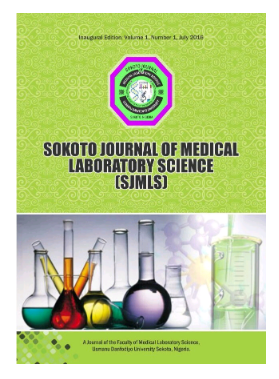Toll-Like receptors-2 and-4 levels in streptozotocin-induced diabetic Wistar rats
Keywords:
Toll Like Receptor-2, Toll Like Receptor-4, Diabetes mellitus, Albino Wistar rats, Streptozotocin, Metformin, HBA1CAbstract
Diabetes is a multifactorial metabolic disorder that leads to complications. Hyperglycaemia induced inflammation is central in diabetes complications. TLR2 and TLR4 initiate and propagate persistent inflammation in diabetes. This study evaluated TLR2, TLR4, FBG and HBAIC levels in Streptozotocin-induced DM, assessed the effect of metformin treatment and gender differences on TLR2, TLR4, FBG and HBAIC levels. Thirty (30) adult male and female albino Wistar rats grouped into 3 with 10 rats in each group were used. Group 1 (non- diabetic rats as control), group 2 (Streptozotocin- induced diabetic rats untreated) and group 3 (Streptozotocin-induced diabetic rats treated with metformin). Serum TLR2, TLR4, FBG and HBAIC were analyzed using standard techniques. TLR2 levels was significantly increased in non-treated and treated diabetic rats compared to control (p<0.05) while TLR4 was not significantly increased (p>0.05). Although Metformin treatment had no effect on TLR2, TLR4 and FBG, it had a significant effect on HBAIC levels. No gender difference in TLR2, TLR4 and HBAIC levels, but significant difference (P<0.05) on FBG levels. Hyperglycaemia, the hallmark of DM elevated TLR2 levels. It can be deduced from the finding of the present study that high levels of TLR2 might be implicated in the pathogenesis of type 2 diabetes. Hence, the need for novel strategies to downregulate TLR2 levels, thereby reducing the risk of obesity and other predisposing factors involved in the pathogenesis of diabetes mellitus.




